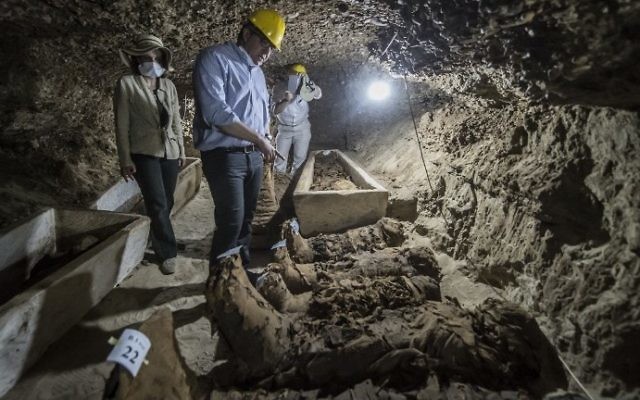Archaeologists in Egypt on Thursday unveiled 16 ancient tombs.
The tombs are filled with sarcophagi and other artifacts from a vast burial ground.
The discoveries were made in the village of Tuna al-Gabal, near the Nile Valley city of Minya in central Egypt, Egypt’s Antiquities Ministry announced.
Citing the secretary-general of Egypt’s Supreme Council of Antiquities, Mostafa Waziri, the Associated Press reported that the tombs likely belonged to the high priests of Thoth, Egypt’s ancient god of writing and wisdom.
The tombs, Wazari said are in “good condition” and the sarcophagi stone “well-polished.”
The tombs date back to three dynasties, from 664-399 BC, in the Pharaonic late Period.
Among the new treasures unveiled are: 20 sarcophagi made from limestone and etched with hieroglyphic texts, five wooden coffins, hundreds of amulets and 10,000 blue funerary statues, known as ushabti figurines, which are fixtures in the ancient tombs of the area, reported the Associated Press.

The sarcophagus lids are molded into mummy-like figures of men.
Last year, a huge cache of wooden and bronze statues including animal mummies found in an ancient Egyptian necropolis of Saqqara near the Giza pyramids were unveiled in the North African country.
The discoveries which include mummified cats, crocodiles, cobras, and birds were unveiled in the capital Cairo. Archaeologists uncovered them in 2018 in the ancient necropolis, south of the capital.
It was the latest in a series of new finds that Egypt sought to publicize to revive its key tourism sector, which was badly hit by the turmoil that followed the 2011 uprising that toppled longtime ruler Hosni Mubarak.
Egyptian officials have described a large scarab statue among the discoveries as the most significant, according to BBC.










